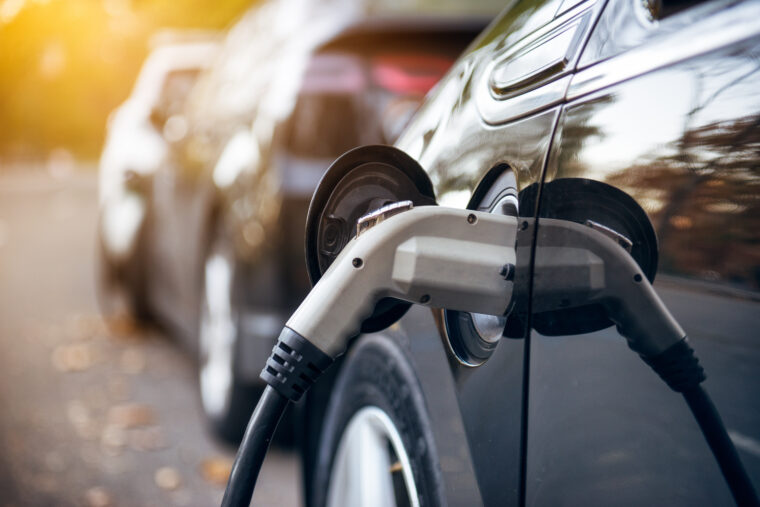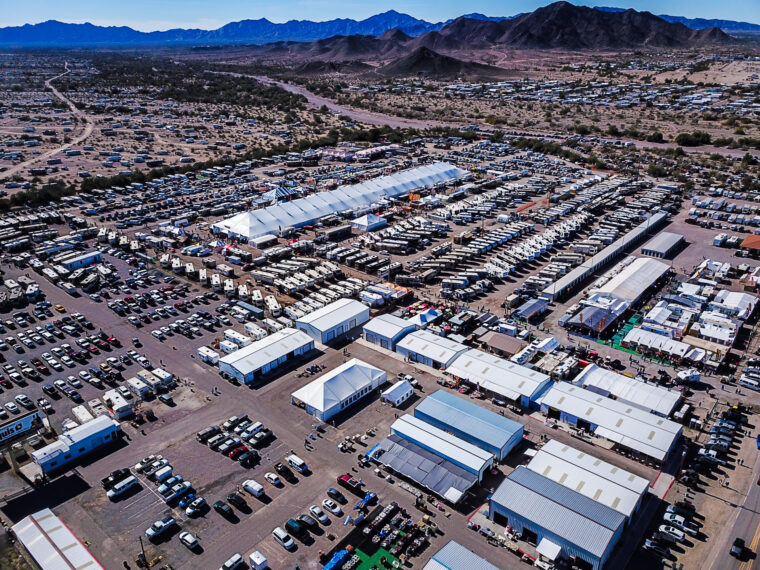Over the last 5 years of RVing, I’ve developed a recycling routine. When I first got into RVing, I did my research on the processes of setup, breakdown, and traveling, but when it came to disposal of household waste, the most common option I found was to just throw everything away. The existential threat of climate change constantly rings in my ear, and it felt morally wrong to throw everything in the trash. So I was going to figure out a way to recycle—and I did, to the best of my abilities.
Recycling is complicated. Options and regulations vary by municipality, and they also change frequently. But many experts agree that waste segregation at the source improves overall recycling processes, meaning trash separated at the household level or at a civic amenity site does help. As RVers, we have to replace “household” with “RV” and get to work.
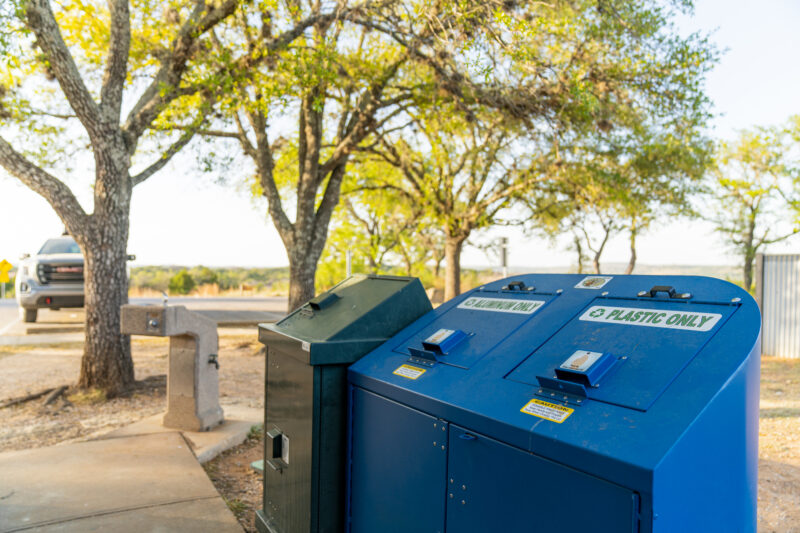
RVers already have to coordinate travel, book stays, find dump stations, scout boondocking sites, shop for groceries, receive mail, store belongings in small spaces, and more. But it’s important to also add recycling to the list of travel responsibilities. Here are tips to help kickstart a recycling routine—it’s not a perfect process, but it’s a good place to start.
Recycle What You Brought
Recycling when RVing begins with an awareness of what you bring into your rig—because you’ll have to dispose of it at some point. Certain items are more straightforward to recycle than others, so you can make it easy on yourself ahead of time by purchasing products that you can easily dispose of. If you’re camping on a short trip and the campground doesn’t have recycling options, take your items with you when you leave and recycle them at home.
When boondocking on an extended trip, or if you’re full-time RVing and the campground doesn’t have recycling, collect items to recycle later.
Determine What You Can and Can’t Recycle
Understand which items you can recycle and prepare them for collecting and sorting. The most common materials that can be recycled are paper, plastic, tin, steel, glass, and cardboard. However, if an item is made up of these materials, it doesn’t automatically mean it can be recycled.
To determine how to properly dispose of waste, examine the packaging. Many recyclable items have a symbol or instructions for recycling them. Some companies use QR codes to share how to recycle their products. If there’s no packaging or instructions on the label, the item might have a recycling symbol imprinted on it.
Plastic
When it comes to plastic, symbols that include the numbers 1, 2, and 5 are the most commonly accepted types of plastics at recycling facilities. These items tend to be soda bottles, detergent jugs, cooking oil bottles, shampoo bottles, etc. Collect these items, and if you find a recycling facility that doesn’t accept plastic 5, recycle the 1 and 2 products and hold onto the 5 products until you find a facility that does.
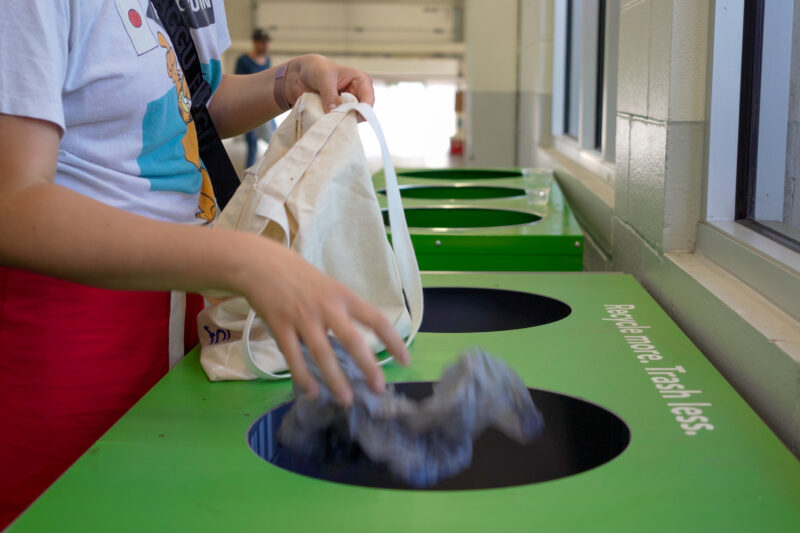
Don’t put plastic bags in recycling bins and don’t drop off recyclables tied up in a plastic bag. Plastic bags jam equipment and back up production and processing at recycling facilities. Plastic bags are recyclable, though. They just need to be recycled at in-store drop-off locations like Target, Walmart, or your local grocery store. You’ll notice the “store drop-off” recycling symbol on more than just grocery bags. Sandwich and snack bags, case wrappings, produce bags, and other miscellaneous food bags can be recycled at select store drop-off locations.
Biodegradable and compostable plastics also don’t belong in recycling bins. Bioplastics are made from plants like sugar cane, bamboo, potato starches, soy proteins, and other sources, but not all bioplastics decompose at a rate to be considered biodegradable. Compostable plastic is a type of bioplastic that breaks down by biological treatment at a commercial or industrial composting facility. So, compostable plastic is biodegradable but not every plastic that’s biodegradable is compostable. Compostable plastic degrades into soil conditioning material, whereas other biodegradable plastic may decompose in soil or water. Send these plastics to their appropriate industrial facilities. They’re not engineered to biodegrade in nature, so don’t try putting them in the dirt.
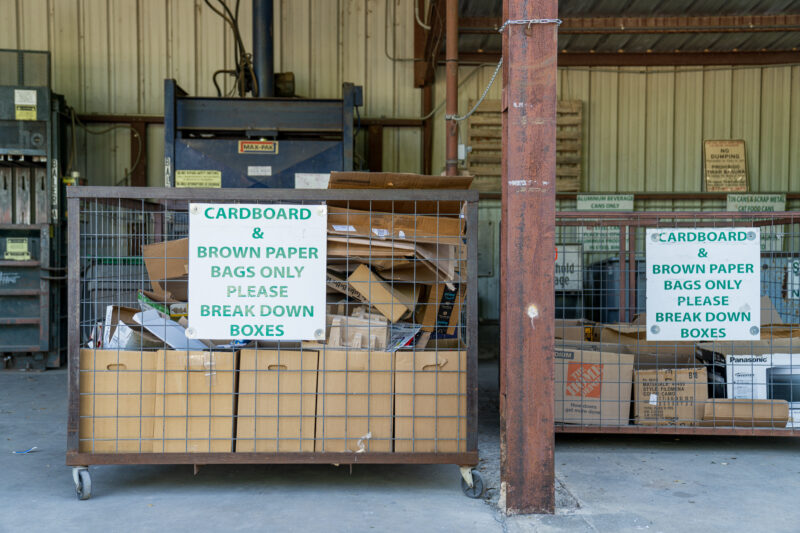
Paper and Cardboard
Most paper and cardboard products are recyclable as long as they’re not wax-coated, lined with plastic or foil, or covered in non-paper embellishment.

Metals and Glass
Tin and steel food cans can be recycled. Also, aluminum cans that hold pop, beer, or sparkling water are recyclable. Additionally, glass containers (jars or bottles) can be recycled.
How to Prepare Recyclables
When finished with a recyclable product, be sure that it’s thoroughly clean. Recyclable items should not have food remnants, but items don’t need to be spotless to be recycled. Use your best judgment to decide whether you should clean your recyclable item. Sometimes it requires nothing or just a quick rinse. If you wash or rinse something out, let it dry. Caps are recyclable but put them back on empty containers before recycling.
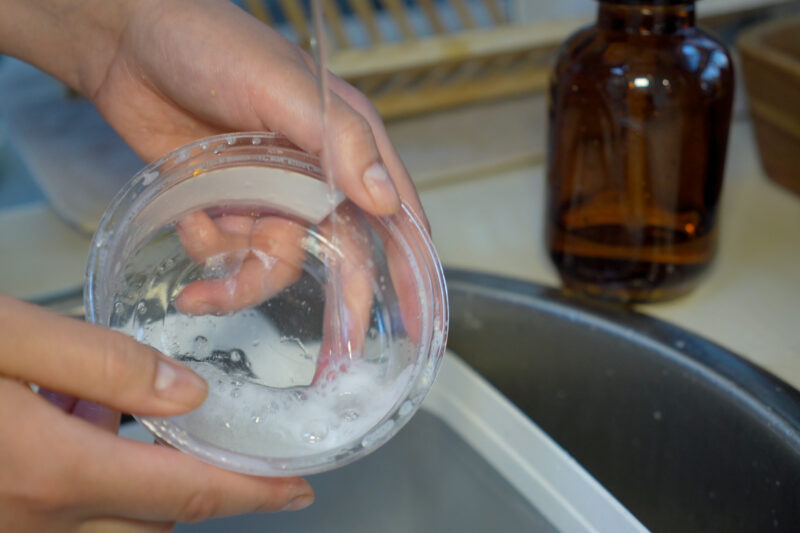
With paper and cardboard, break down and flatten containers and boxes. Aerosol cans can also be recycled, but need to be emptied and not include the cap. Ensure that camp stove fuel canisters are empty. Puncture the container thoroughly to communicate to recycling handlers that it doesn’t pose a threat. Rinse any food remnants from tin cans. Aluminum cans don’t need to be cleaned, and any residue will burn off at the recycling facility.
BYOB: Bring Your Own Bin(s)
When it comes to recycling programs, the rules for each campground, county, and state vary, so be flexible by having your own bins or bags to collect and transport your recycling. Consider using collapsible bags or nesting bins to save on space. Hard containers don’t blow over in the wind and easily rinse out with a hose. It’s convenient to have multiple bins so you can travel in spurts without stopping at a facility.
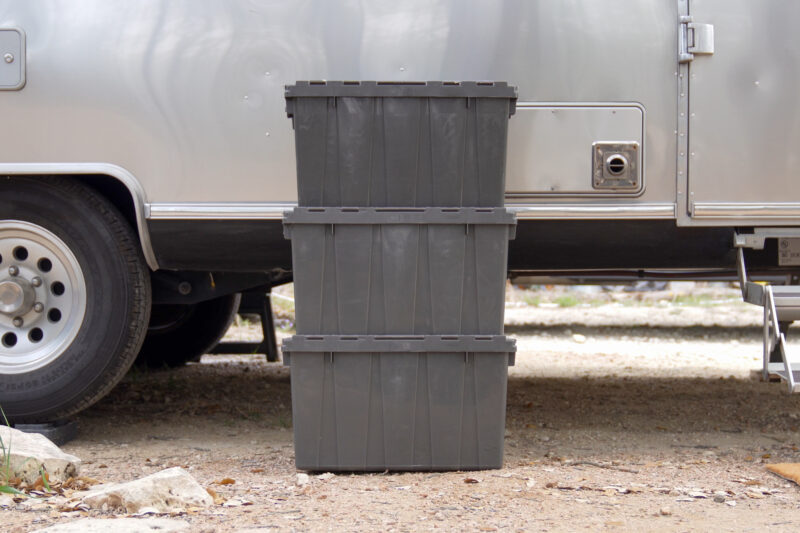
How to Find Recycling Centers on the Go
Before heading out for the day, search for the closest recycling center or transfer station, find a nearby grocery or chain store with drop-off recycling, or use the provided bins at the campground. Here are some useful apps and websites to help you find recycling locations:
Reduce and Reuse
Skip plastic bottles, and don’t forget to bring refillable water bottles. Avoid disposable single-use items as much as possible and use reusable silverware, straws, cups, and plates. Bring tote bags when grocery shopping. Try to use rags, cloth napkins, and hand towels instead of paper towels. Donate items you no longer need that can be reused, such as clothing, shoes, camp chairs, camp stoves, and backpacks. If you’re looking for some new outdoor items, like rain jackets, skis, hiking boots, or walking poles, stop by a thrift store or REI’s online used gear shop.

